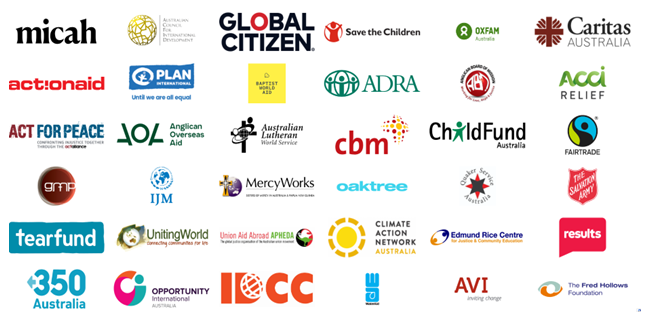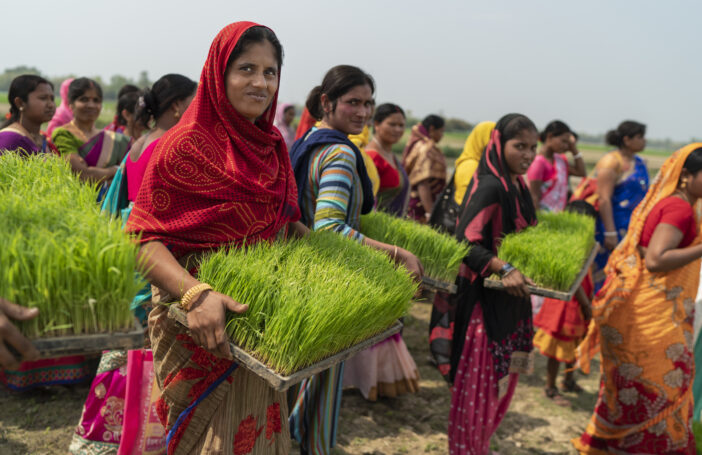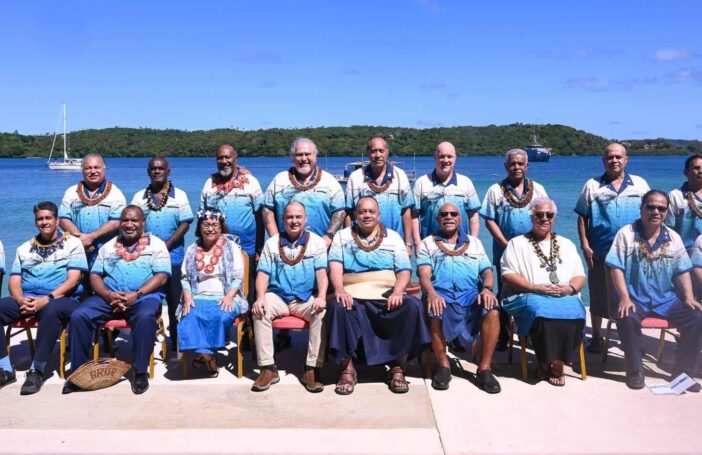On International Women’s Day 2024, we bring you an edited extract from Dr Pamela Toliman’s contribution to the 2024 Ruth Bishop Address, presented annually by the Indo-Pacific Centre for Health Security within the Australian Department of Foreign Affairs and Trade.
I want to start by saying four names — Josephine Toliman Rengkio, Immaculata Tolman Kereku, Patricia Tolman, Ludwina Tolman Hanamo — four women, my aunts, who lost their lives to cervical cancer.
For me, they represent the thousands and thousands of other women that have been lost to PNG and their families. I say these names because people are at the centre of everything that we do here at the PNG Institute of Medical Research (IMR). It has been a privilege to be part of an institute that has allowed me to do the kind of work that aligns with the values and principles that I carry as an individual.
I have just clocked up 21 years of service as a health researcher. The entire time has been an immense period of personal and professional growth. I want to acknowledge the support of the institute for supporting and growing Papua New Guinean women scientists. I am a product of that. We currently have four research units — all currently led by Papua New Guinean women. Thanks are due for the leadership of Professor William Pomat and Dr Moses Laman.
The IMR logo is a shield, and a shield is symbolic of cover and protection, particularly in warfare. Our motto is in Tok Pisin — Save Tombium Sik — knowledge prevents illness. We are at the forefront of learning and translating that knowledge into protection for our people.
One project that has immediately led to a change in policy and practice is in cervical cancer prevention. Our achievement is that we can now offer women a point-of-care, same-day service.
In the Western Highlands province, where we have supported the establishment of a cervical cancer screening centre, we have already screened over 14,000 women. Beyond PNG, in Vanuatu, over 7,000 women have been screened with the same model of care. Today, other provincial health authorities in PNG are seeking guidance on how to start and scale up this service.
This success could only have been achieved with partnerships and collaboration. I want to tell you the story of how it all came together.
First, there was a crisis. The pressing issue at that time was that a 10-year-long cervical Pap smear program was coming to an end. This program supported prepared samples or slides to be sent overseas to Australia, so there were many issues regarding the sustainability of the program.
It was then that the institute began a program of research to try and find a solution for PNG. An important partner in this endeavour, the PNG Obstetrics and Gynaecology Society, had evidence that visual inspection with acetic acid (VIA), followed by cervical ablation, worked in other countries like Thailand and India. But could this actually work for us in PNG?
The initial data produced from our research with the Kirby Institute at the University of New South Wales found that there was a very poor correlation between VIA and human papilloma virus (HPV) positivity. HPV is the virus that causes or enables cervical cancer to occur. This was very disappointing, but we didn’t give up.
The next thing that happened was that there was a global paradigm shift. The World Health Organization (WHO) put out new recommendations that effectively said, “maybe we need to look upstream and actually go after or detect the causative agent so as to screen and provide care for women earlier, rather than after the fact when there has already been some progression of the disease”. But the WHO recommendations were based on very little data, particularly from low- and middle-income countries.
Now the game-changer happened when the medical device manufacturer Cepheid produced the HPV cartridge. GeneXpert machines were already available in our healthcare system to test for tuberculosis. Now we had a cartridge that could be used in these machines to detect the 14 high-risk HPV types that were implicated in cervical cancer development, particularly types 16, 18 and 45. It was so exciting.
The GeneXpert data initially came from clinician-collected specimens. The innovation in PNG happened when we asked, “can we use this technology on self-collected vaginal swab specimens?” We conducted the first-ever field trial comparing paired specimens. Could the vaginal swab be as accurate and show the same results as the clinician swab? What we found was that the agreement was almost spot on. That was the catalyst.
So this started off a whole body of work where we looked at checking whether our method had the power to predict high-grade disease. You want to make sure that it can accurately identify the women that need treatment.
One important way that the new model of care differs from the previous approach is that with VIA every single woman needed to have a pelvic examination, and that is a heavy burden on our healthcare workers. With the new approach, you could get 10 women in there all doing a self-collected vaginal swab. The result is available in under an hour and while they are waiting they are watching health videos, getting extra health information. If they get a negative result, we say, “we’ll see you in five years’ time”. If they’re positive we can then do a cervical ablation, or complicated presentations are referred to a gynaecologist.
All these things could not have happened without a whole team of people who worked to make this possible.
But what is the institute’s role during program implementation?
In the Western Highlands, we are trialing different models of care delivery. So we have a central screening centre, but we also have a truck converted into a mobile clinic to take the service into the community. Of the 14,000 women who have been screened to date, 50% have come through the outreach approach, which shows the power of it.
Initially we thought we would collect data from Mount Hagen Hospital, and if women from certain districts were not being represented, then we would send the mobile clinic there. But now they are learning that people like services brought to them. So, should we now be integrating more screening services such as for breast cancer? And for other non-communicable diseases?
The work is not done. The screening algorithm works for now but with the changing pattern of diseases we need to explore new algorithms. We need to keep our finger on the pulse of newer technologies and tests. We need to look at things like cancer biomarkers.
The innovation I have talked about did not come in time for the four aunts that I mentioned and the other people who have already been lost. But we do not stop. We continue to work hard. We continue to strive for excellence in the things that we offer for Papua New Guineans — the best level and standard of care that is available. They deserve nothing less.
The 2024 Ruth Bishop Address was delivered at the Australian High Commission in Port Moresby on 22 February 2024, with contributions also from Professor William Pomat and Dr Moses Laman. A recording is available on the Australian High Commission’s Facebook page.
The annual Address is named for the Australian virologist Professor Ruth Bishop AC who in 1973 led the discovery of rotavirus, the major cause of enteritis in infants and children, and later helped develop vaccines against this disease which was killing half a million children each year.






We also need to start discussions on making the HPV vaccine available to women and girls throughout the country.